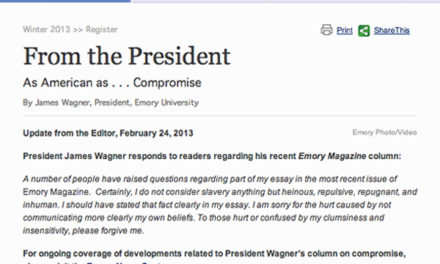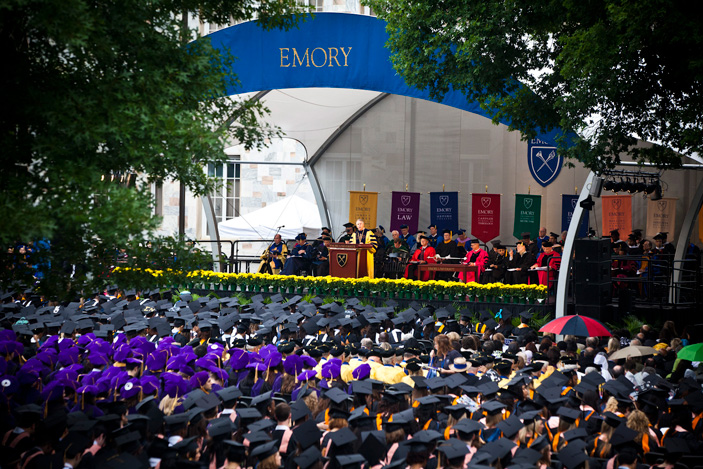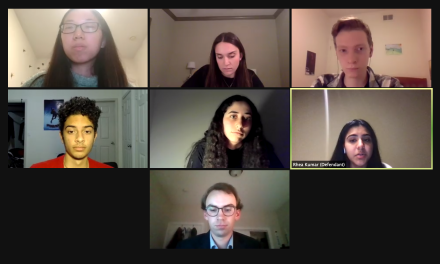Twenty-nine blue chairs hang in midair, suspended from a railing in the Dobbs University Center.
This temporary creative installment, mimicked across campus in the atrium of the Math and Science Center, pays tribute to the 29 endowed faculty chair positions that Campaign Emory has created.
Three similar installments celebrating the success of Campaign Emory are currently on display around Emory University’s campus.
Campaign Emory, a seven-year fundraising effort that the University publicly announced in September 2008, has raised more than $1.69 billion, according to a Jan. 18 Wheel article.
Senior Vice President of Development and Alumni Relations Susan Cruse said the exhibits “illustrate the impact of philanthropy in a visible way.”
The second exhibit consists of a row of 24 books with their pages folded to read, “Information is not knowledge” – a quote made famous by Albert Einstein.
The display, first shown at the Robert W. Woodruff Library, and which represents the campaign’s gifts to research, will rotate to different locations until mid-March, Cruse said.
In addition to the Emerson Hall Foyer and the main spiral staircase at the Goizueta Business School, a tower of mortar-board graduation caps represents a small number of the students who received scholarships due to donations to Campaign Emory, Cruse said.
A building fa̤ade Рwhich was originally on display at the beginning of the campaign Рin the Claudia Nance Rollins Building and inside of the James B. Williams Medical Education Building, represents facility improvements, refurbishments and new buildings made possible by donations from the campaign, according to Cruse.
Cruse said the exhibits aim to thank those who donated to Campaign Emory, including the faculty and staff who contributed more than $108 million in order to allow the campaign’s financial goal to be realized for the benefit of members of the Emory community.
According to Cruse, the exhibits indicate to donors that Emory is a place where they can “invest in excellence with confidence,” she said.
Additionally, the University intends for the displays to demonstrate the importance of philanthropy in Emory’s mission.
Cruse said that she hopes the exhibit will lead people to consider the role and the spectrum of philanthropy as it exists and functions at the University.
“I hope it excites our community and causes people to think about how we are able to do what we do,” she said. “It would not be possible without philanthropy.”
The installations are dispersed across campus in order to expose them to the entire community, according to Cruse.
She added that the exhibits have so far been well received.
“They are visually arresting, and [they] draw people in to what they are all about,” she said.
The suspended chairs, mortar-board caps and building façade are all on display until Feb. 18.
The row of books will continue to rotate to various locations around campus until March 12.
The books will then be on display only at Oxford College until March 19.
–By Elizabeth Howell
The Emory Wheel was founded in 1919 and is currently the only independent, student-run newspaper of Emory University. The Wheel publishes weekly on Wednesdays during the academic year, except during University holidays and scheduled publication intermissions.
The Wheel is financially and editorially independent from the University. All of its content is generated by the Wheel’s more than 100 student staff members and contributing writers, and its printing costs are covered by profits from self-generated advertising sales.






So let me get this straight: Visual Arts at Emory is being eliminated, but a campus wide art installation is the smiling face of Emory’s fundraising success? Huh?